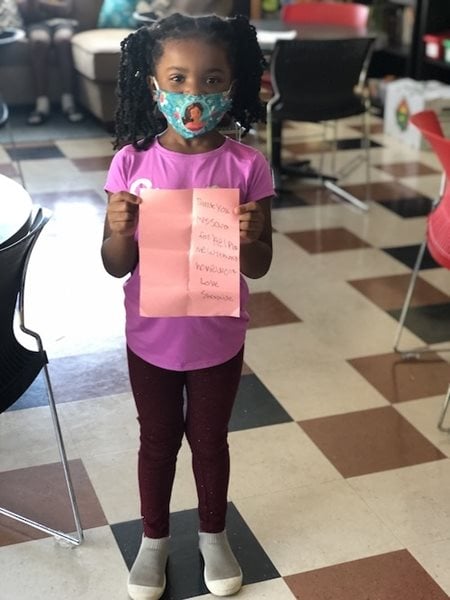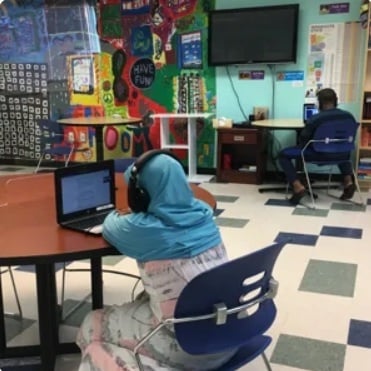CommonBond Communities in St. Paul, Minnesota, works with communities in Minnesota, Iowa, South Dakota and Wisconsin. Right now, organization leaders say, many of the neighbors who live in those communities are struggling.
The organization has more than 7,000 rentals and annually serves around 13,000 residents, says Alicia Cordes-Mayo, communications director. Roughly 16% of those residents are behind on rent. "Many residents were hanging in there, doing everything they could to take care of their families and making their rent payments over the summer," she says. "Unemployment and the stimulus money absolutely helped. But rent payments dropped in September and have continued to decline."
 While she expects community needs to continue growing, funding from NeighborWorks America, in collaboration with the Wells Fargo Foundation, has helped. CommonBond used a grant from the NeighborWorks America Rental Fund to help support and keep staff working on getting rental relief for their residents – making sure they could use dollars from the state and federal government while those dollars were available. It makes the funding go further, she says, and it's working.
While she expects community needs to continue growing, funding from NeighborWorks America, in collaboration with the Wells Fargo Foundation, has helped. CommonBond used a grant from the NeighborWorks America Rental Fund to help support and keep staff working on getting rental relief for their residents – making sure they could use dollars from the state and federal government while those dollars were available. It makes the funding go further, she says, and it's working.
At one site in Minneapolis -- a family housing community known as West Broadway Crescent in a neighborhood with a history of redlining -- staff helped residents obtain $20,000 in support. "That feels like a huge success to us," Cordes-Mayo says. "Obtaining that rental assistance is a slow, challenging process. You need to have the right paperwork, the right documentation, and meet specific eligibility requirements. We're especially appreciative that staff are working so hard to ensure residents can obtain existing rental assistance."
Angie Johnson, director of institutional giving for CommonBond, says most of the state opportunities for funding recently closed in Minnesota. Some required copies of leases. Some needed residents to sign papers. Every form was different. In addition, CommonBond applied to some programs on behalf of residents. "It was a tedious process," she says. "We're all learning."
"At every site, the level of support needed by staff is much higher than it was pre-pandemic," says Jennifer Nielsen, director of programs for CommonBond. Meanwhile, families are choosing between buying groceries and paying rent. To those families, she says, $100 and $200 in assistance is significant.
"The ability to have this other resource through fundraising and through Wells Fargo and NeighborWorks allows us to remove that barrier for residents and to say, 'Go buy those groceries,'" she says. It reduces stress not only on the residents, but on staff members who are concerned about those residents and the tough choices they have to make. 
"Staff themselves have issues with mental health, stress, anxiety and isolation," Nielsen says. While they need time off, many choose to stay connected with residents through the holidays, knowing how much residents look forward to phone calls and conversations in addition to connections to resources.
Some of those resources include helping residents find new jobs. Site coordinators work with residents on resumés, applications, and interviewing techniques, for instance, and posts jobs via connections in the community.
In January, CommonBond will provide rental relief from the organization's own emergency fund, using the remaining grants from NeighborWorks America and others. Nielsen says she expects more government funding to become available in the new year, too. She's hoping this time around, they will find a way to be more efficient and effective, and CommonBond again hopes to apply on behalf of residents.
Nielsen says the organization put together a framework to make sure the rest of the funds can be distributed equitably, most of them among residents who live in unsubsidized properties, where there are fewer resources for relief. Residents won't have to apply, as long as they've spoken with their apartment manager and worked on a plan.
Rarely, she says, are residents a single month behind. "Usually, it's cumulative. Three or four or five."
"We have a good sense of which residents still need support," Cordes-Mayo says. "They're still trying to pay down their rent balances and are working hard."
The threat of COVID-19 sidelined many of the residents in the communities, including people like Maria, who lives in Hennepin County, the state's most populous county. Maria, who asked that her real name not be used, is in her early 60s and has lived in a CommonBond property for 18 years without missing a rental payment. But she works at an assisted living center. She has gout and diabetes. When COVID-19 hit, she reduced her work hours to just two days a week. Staff helped her with paperwork to get several months of emergency assistance.
Because she's in her 60s, and doesn't have a family to support, she says she doesn't fit into some of the relief efforts. But that doesn't mean she doesn't need support with paying her rent.
She says she's grateful for the patience CommonBond has shown as they've helped her navigate what's out there. "I believe at almost any other place, I would probably have been out on the streets by now Knowing what's out there in this dire situation, knowing what could happen, I appreciate CommonBond so much."
NeighborWorks America recognizes that network organizations know best where the needs are in their own communities. That's why, with the help of the Wells Fargo Foundation, the organization dispersed more than $10.2 million to approximately 170 network organizations through the Rental Resilience Fund. More funding came through the Critical Relief Fund. Marietta Rodriguez, president and CEO of NeighborWorks, has said the partnership helps stabilize communities, while increasing access to opportunities.
Further reading: The Rental Resilience Fund helps a community in California.
12/22/2020

